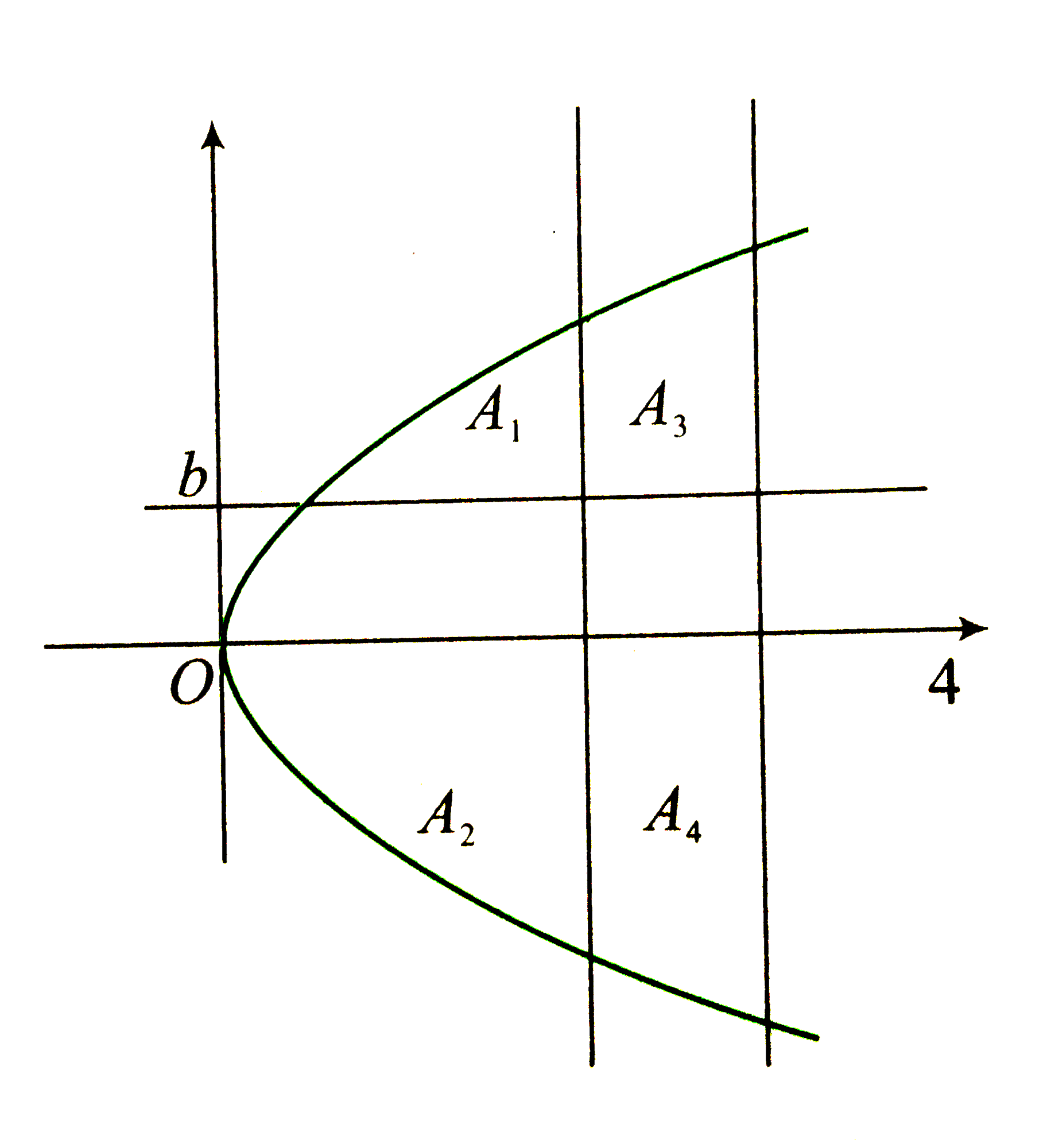Find the derivative of y=3ln(x2−2).Solution in Tamil
The correct Answer is:C
a. 
Total area =24∫0√xdx=323
Area of each part =8/3
A3=A4⇒4∫a(√x−b)dx=4∫a(b+√x)dx=83
∴ b=0
∴ 4∫a√xdx=83
∴ a3=16
b. f(x)={x1logex,x≠1e,x=1={x1logex,x≠1e,x=1=e
Hence required area bound by y=f(x)andy=|x−e| is e2
c.

Area = Area of rectangle OABC−e In 1xdx
=e−1 sq. units.
d. Solving 2cosx=3tanxwe≥t,2−2sin2x=3sinx
⇒ sinx=12⇒x=π6
Required area =π/6∫0(2cosx−3tanx)dx
=(2sinx−3 In secx)π/60
=1+32loge3−3loge2
Topper's Solved these Questions
- BOOK - CENGAGECHAPTER - AREAEXERCISE - Exercise (Numerical)16videos
AREA
- BOOK - CENGAGECHAPTER - AREAEXERCISE - JEE Main Previous Year10videos
AREA
- BOOK - CENGAGECHAPTER - AREAEXERCISE - Exercise (Comprehension)21videos
AREA
- BOOK - CENGAGECHAPTER - APPLICATIONS OF DERIVATIVESEXERCISE - Subjective Type2videos
APPLICATIONS OF DERIVATIVES
- BOOK - CENGAGECHAPTER - AREA UNDER CURVESEXERCISE - Question Bank10videos
AREA UNDER CURVES
Similar Questions
The area enclosed by the curve C:y=x√9−x2(x≥0) and the x-axis is___.
02:35View SolutionThe area of the figure bounded by the parabola (y−2)2=x−1, the tangent to it at the point with the ordinate y=3, and the x-axis is
04:18View SolutionLet Ar be the area of the region bounded between the curves y2=(e−kr)x(where k>0,r∈N) and the line y=mx(where m≠0), k and m are some constants
A1,A2,A3,… are in G.P. with common ratio04:08View SolutionProve that for λ>1, the equation xlogx+x=λ has least one solution in [1,λ].
00:59View SolutionThe area of the region (s) enclosed by the curves y=x2 and y=√|x| is
01:29View Solutionderivative of x^(2)+y^(2)=log(xy)
02:34View SolutionFind derivative of y=ln3tan2(x4)
03:07View SolutionFind the derivative of y=(lnx)x23x+1
05:06View SolutionFind the derivative of the inverse function of the following: y=x2+logx
02:57View SolutionFind the derivative of the inverse function of the following: y=x2+logx
02:18View Solutionfind derivative of log(x2)
01:41View SolutionFind the derivate of y = log sqrt(x^2 + a^2) .
02:25View SolutionFind the derivate of y = log x/sqrt(1-x^2) .
02:51View SolutionFind the derivate of y = e^x log (1+x^2) .
02:28View SolutionFind the derivatives of the function
If x=log(1+sin2y) show that dydx=exsin2y.01:37View Solution

